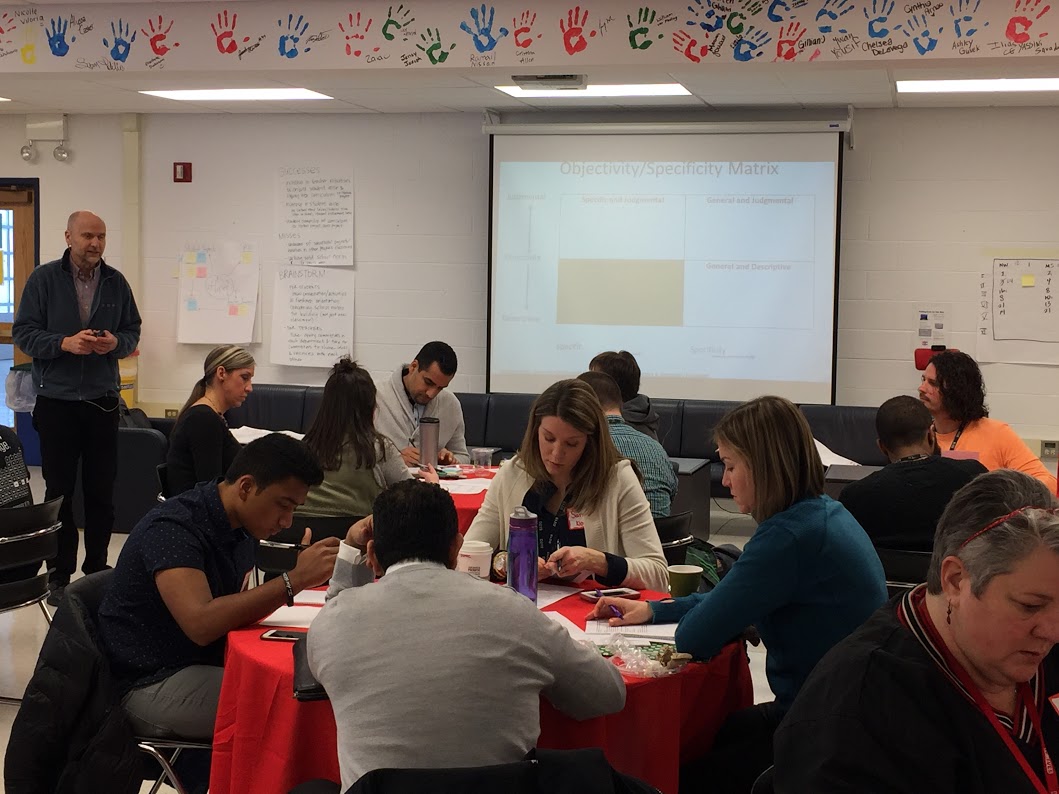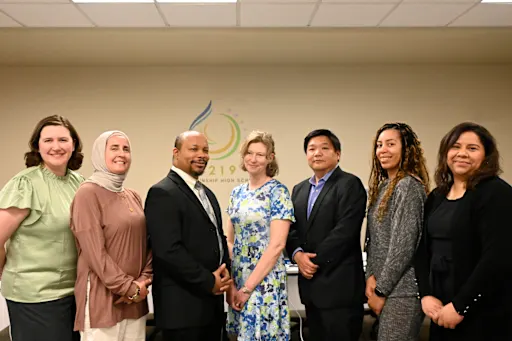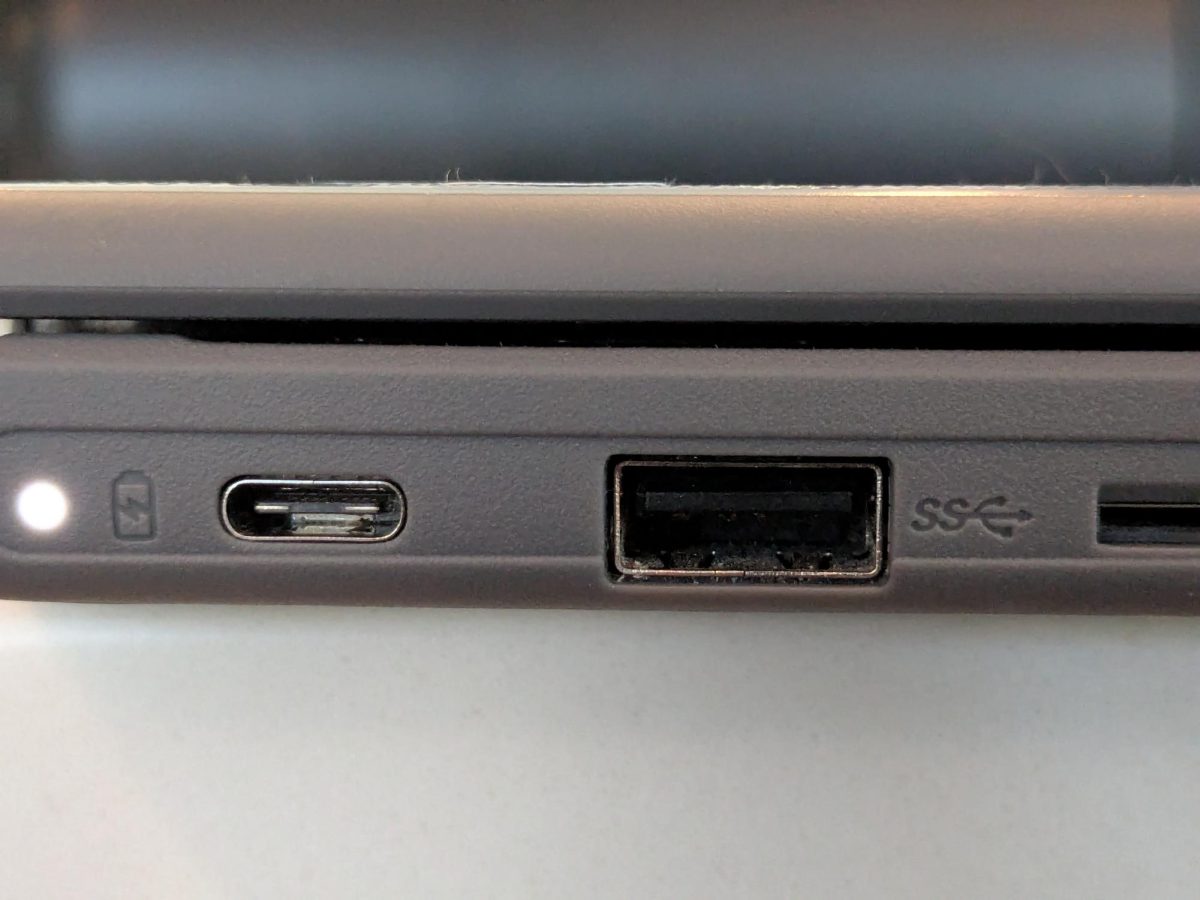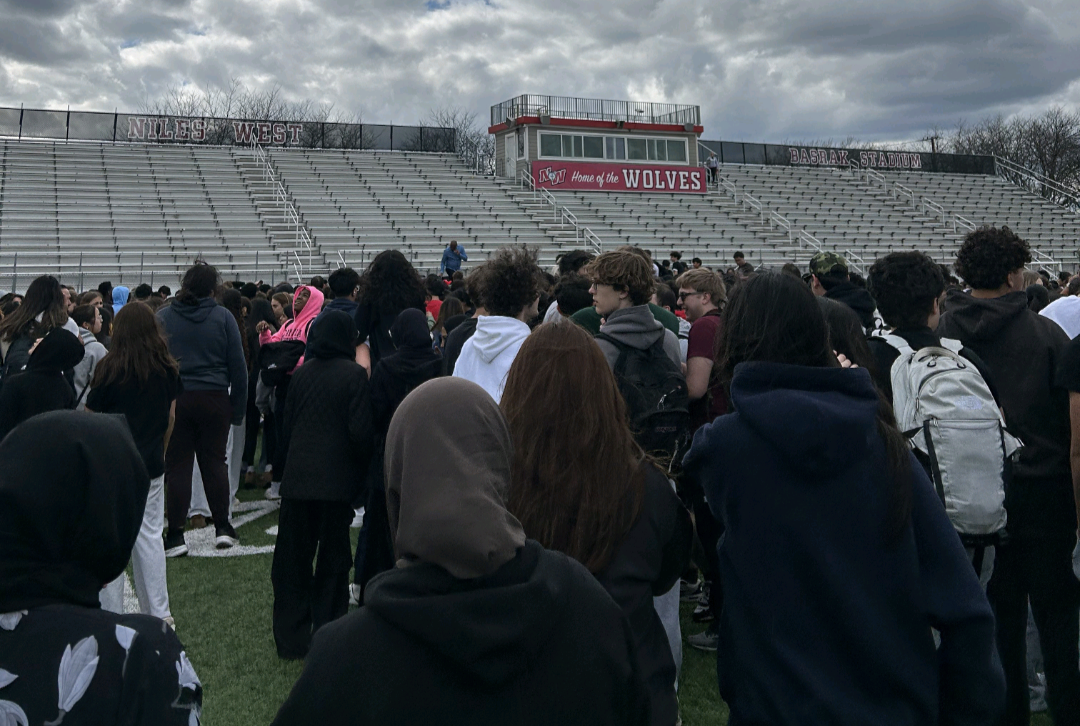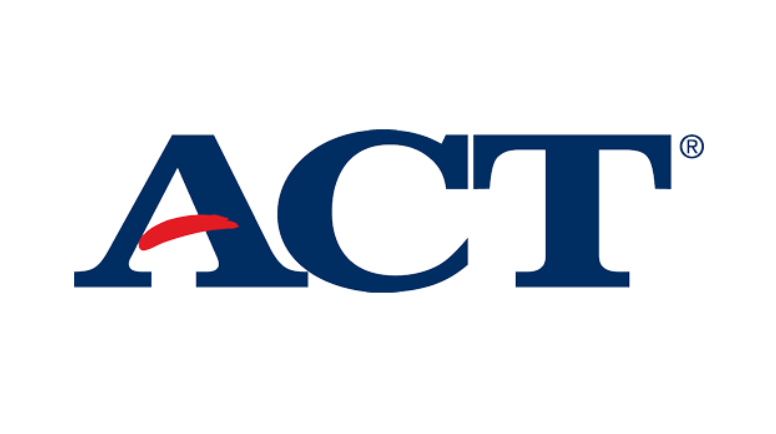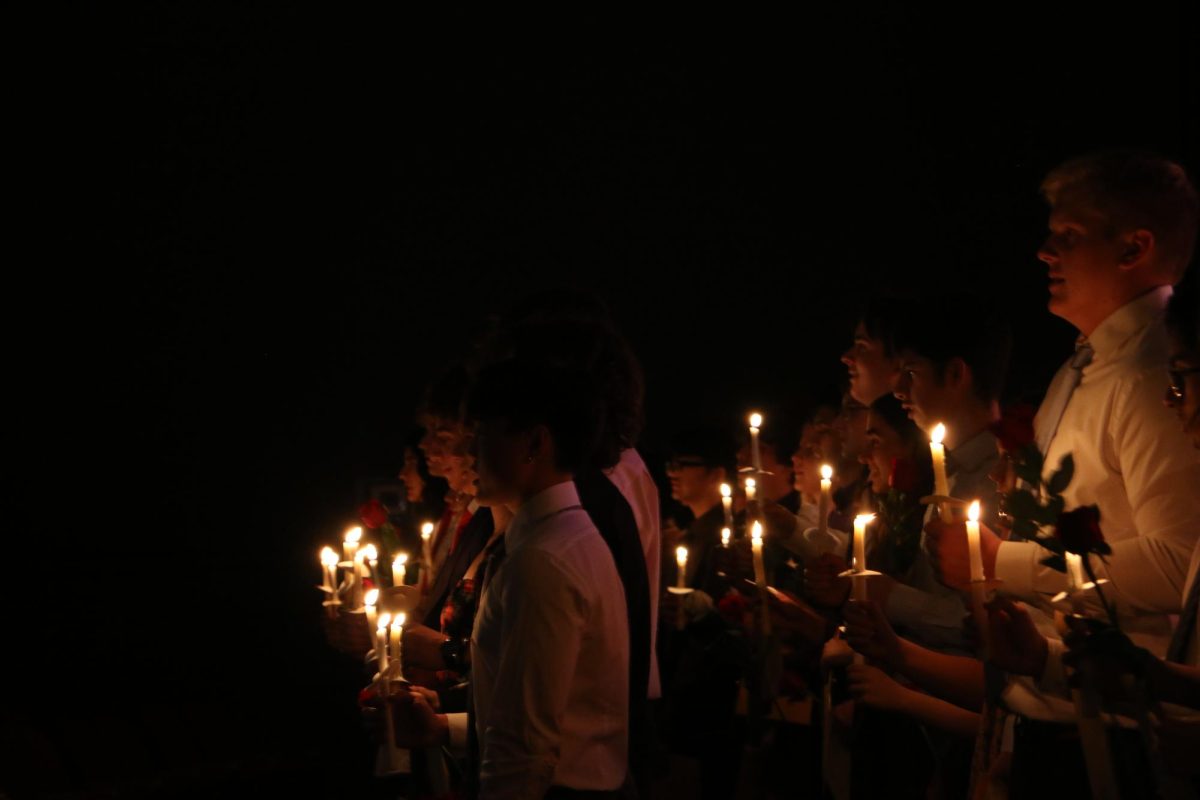In an effort to tackle the lack of student voice throughout the school, Niles West has become one of the first schools in the state of Illinois to include students in a school improvement workshop, which was held on March 13 and 14 in the student commons.
The workshop consisted of 35 people total, including a few teachers from West’s sister school, Niles North, along with nine students total from all grade levels. The objective of this workshop was to understand the elements of an instructional core which students are an essential part of, according to principal Jason Ness.
According to Ness, a 2013 5Essentials Survey indicated that student voice at West was at an all-time low, with responses from students indicating only 11 percent felt there was sufficient voice and communication. It became clear that departments were operating with a “silo” mentality, i.e. operating individually with no clear communication between other students and other departments. The Student-Led Instructional Rounds & Equity workshop was designed to combat the lack of student response in schools, discussion among departments, and inclusion of students in areas of school improvement and education.
“We’ve spend a lot of time focusing on instructional core, and by definition that’s teachers, students and content — the presence of teachers and students in content. For a few years, we were working very closely with improving our content and improving our teaching, but we didn’t have the students part of it,” Ness said. “We’ve learned that when students were involved, there was tremendous amount of insight into our work, and it really advanced and accelerated our efforts. That’s why were were critical and very excited about including them moving forward.”
Seniors Lejla Vojnikovic and Nicholas Ieremciuc, juniors Shebin Chacko, Kayla Brissett-Scott, Brendan Micor, and Ethan Moldofsky, sophomore Kayla Lawrence, and freshman Christian Mancino were chosen by principal Ness and assistant principal of student services Antwan Babakhani as representatives for student voice.
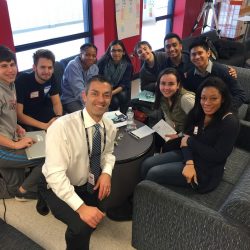
“I think that student voice is important because essentially the school can only be a school with students. We make up the majority of people within the building and we walk to nine periods a day for four years, so we’ve got to have some experience as to what fits well in the school setting and what doesn’t,” Vojnikovic said. “Student voice is the building block of what can make a school great. When we actively engage with our students and truly listen to what they have to say, it can change the whole perspective of how we view something. Without student voice school would be, I mean, really nothing.”
After being chosen, the team of eight students was then trained in a half-day workshop beforehand, where they learned what rounds are and how to conduct them. Rounds are meant to be a quick, intense review of teachers and their work without the assessment of individuals, thus separating the person from the practice. It was designed to support an existing improvement strategy at the school level. Rounds are conducted by writing specific, observable data without any judgment and then adding cultural or personal meaning to the data. Students were then taught how to make an assumption based on the meaning, draw a conclusion and adopt a belief, and finally, take action.
“They were trained pretty quick. It’s really learning to see and learning to hear and looking for specific, descriptive data. So, the students basically participated in simulations — they didn’t physically go into classrooms until the workshop because of time constraints,” Ness said. “It was about walking the students through with a very specific focus. In the simulated rounds we used higher level questioning or teacher-student interactions. It was very helpful that way so that when students walked into classrooms, they were very prepared and to knew what to look for.”
The two-day workshop, led by Dr. Lee Teitel and Dr. Darnisa Amante, focused on building what a diverse school should look like and how to view students as individuals and make that idea reflective in curriculum. It was a new environment for both teachers and students alike due to that fact that never before had both parties been involved at the same time. For this reason, a majority of the first day was spent breaking the ice and establishing students as equals who were unafraid to speak their minds.
“Going into this workshop, I really had no clue what to expect. I mean we did go through a training session the Friday before, but I still was a little worried I didn’t really grasp what we were going to be doing, or at least not well enough to do something about it. However, I was happily surprised that the whole workshop was so open and just a wonderful environment to be in from the start,” Vojnikovic said. “The beginning was a little awkward, as it is with most events, because it was just a handful of students in a room of important teachers and faculty. But once we all started talking, I think there was an immediate respect and want to be there from every party that attended. I think that just being able to really talk to people I thought were so far above me was really motivating because I think it showed how easy it is to voice your concerns at our school.”
Students were placed into separate groups with teachers, and these groups brainstormed ways Niles West could use its facilities and organizations to vocalize events and reach out to students who don’t want to be in class. The main focus of that day was understanding that everyone has a life outside of work and school, a concept that many people forget. Many ideas came from underclassmen, such as Chacko, who understood the importance of reaching out to freshmen and other students alike.
“I thought that it was extremely important to include underclassmen in this workshop because it allowed Dr. Ness, Dr. Babakhani and other staff members to really grasp an understanding of not only seniors who have been attending Niles West and classes for years, but also of the new transitional students and all those in between. I thought it was key to building a better understanding and also having a different point of views from students,” Chacko said.
As the day went by, the students’ participation increased dramatically, up to the point that each student had a response or a suggestion during every discussion. Ieremciuc discovered the importance of student voice among highly qualified people in providing a sense of realism as to what students go through on a daily basis.
“The experienced can always gain more knowledge, but it takes time for the inexperienced to develop that same level of understanding. That being said, seniors are the students with the most street credibility in the building. They’ve seen nearly every part of Niles West and thus provide a depth of input that underclassmen may not have acquired yet,” Ieremciuc said. “On a less charismatic note, seniors have nothing to lose and aren’t afraid of being honest, frank, and vocal about their opinions. When paired with professional adults and Ph.D-bearing administrators, confidence can be more important in student voice than one might expect.”
The following day, the actual rounds were conducted, with one student assigned to a group of five teachers. Each group went to three classrooms and made observations without any judgments for 20 minutes. Afterward, everyone returned to the commons to discuss their observations. Each group made a poster of their data and shared their conclusion; the most common discovery being that there was no clear-cut discussion of equity in classrooms.
“I expected to sit at small round tables with a few teachers and talk about the problems with Niles West. My expectation wasn’t wrong — we definitely discussed school issues — but it was incomplete,” Ieremciuc said. “Our outlook was unashamedly broad and deep, and I ended up finding that the outlook of teachers and administrators is not all that different from my own. Sure, they had a teaching degree and a decade or two of experience, but we all had the same basic goal when it came to addressing diversity and improving equity within Niles West.”
Another discovery that resonated throughout the day was that there were not enough student-led discussions or talk about current events. During rounds, most classes were led by teachers, and students had to raise their hands to ask or answer questions, preventing students the ability to be vocal and implement their voice. But despite these findings, there are some classes at West that are almost completely student-led. Sophomore Hana Frisch‘s English class is one of the few classes at West that have student-led discussions at least once a week.
“In my class, every week on Thursdays, we have these student led discussions. A pair of people pick an article that we read in class and then we have a discussion about questions that the students have chosen. I think it’s really interesting because we get to see what other people are interested in and see different viewpoints. We are more engaged because we get to pick the articles that we read. It’s pretty much a student-led class,” Frisch said.
Following the rounds, every staff member and teacher got together with their departments and one student was assigned to each department. From there, the departments came up with their own definition of equity and how to incorporate equity into their curriculum. Everyone present collectively agreed that in order to move forward, support and participation from the administration was a must. To end the the two-day workshop, both students and teachers spoke about the experience and how to move forward in terms of student voice. Chacko described the entire process with two words: appreciation and understanding.
“As a junior here at Niles West I have been in many classrooms, and it’s the first time I walked into a class with a different appreciation for my teachers and other students. This is due to the amount of time that goes into making the classroom a better environment of learning for everyone despite their needs. The understanding portion comes from both sides. The understanding that no matter what happens at home or school, we are here at Niles West, carrying our baggage,” Chacko said. “But the baggage isn’t weight. The baggage is rather our story. The story that you have created or slowly are creating. Whether it’s educational, emotional, sexual, or any other struggle, it creates you into the person you are and ultimately will create you into the wonderful person you are meant to be. This workshop not only allowed for me to have a better understanding and appreciation, but it is a part of my story and is building my character, and I know it will build the character of those who are in administration or staff, the students, or anyone who is at Niles West because it really makes you think a different way.”
Ieremciuc not only credits the workshop for expanding his awareness about discussions of equity, but also finds himself beginning the conversations in his classes.
“This project has boosted and expanded my awareness. Currently, I am more adept at taking notice of instances when a teacher or student is acting in a way that encourages or disables an equitable attitude in the classroom. My perspective widens daily as I continue to reflect on the discussions we had at our two-day workshop, and I feel enabled to bring up conversations about diversity and equity within our school,” Ieremciuc said. “Secondly, I find myself taking on the role of a mentor or teacher when it comes to cultivating equity with my peers, especially those younger than me.”
Although including students in rounds is a very new process, all of the students said they hope that in the following years, there are more students involved in the process rather than just one or two representatives.
“While student instructional rounds are still very, very, new, I think that — as usual — Niles West is ahead of the game. We’re on the way to making a really collaborative school network, and even after graduation I’ll be excited to hear where they move forward with this,” Vojnikovic said. “I hope that more students will be able to participate and engage because we’re only a handful of students and I already feel the momentum of what we’ve done start to shift things so I really can’t wait to see what that looks like even just within the next couple of years. The students here have so many great ideas on how to improve the lifestyle and equity standards of the school so I really hope that it’ll shine through and Niles West will be one of the leading schools in lighting this new path of change.”



